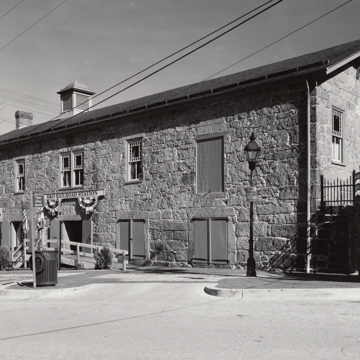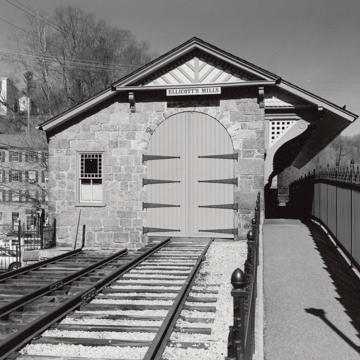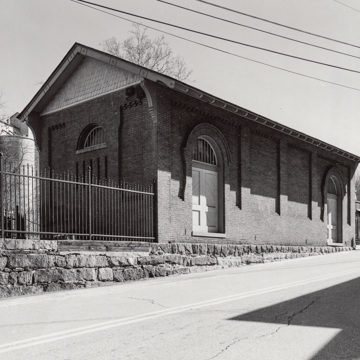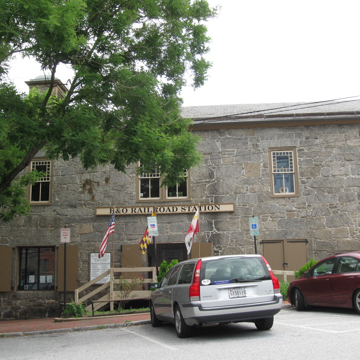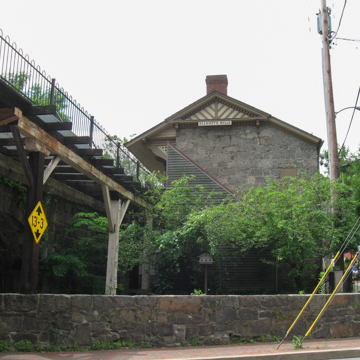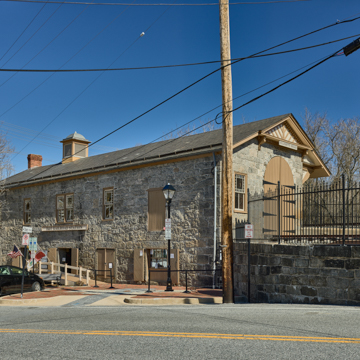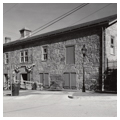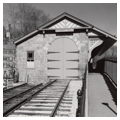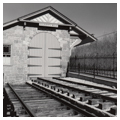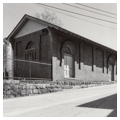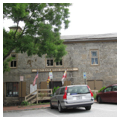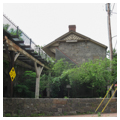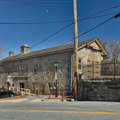The Baltimore and Ohio (B&O) was the first railroad in the nation to offer freight and passenger service, with Ellicott City as the terminus of the original thirteen-mile line. The station is the oldest in the country, built of granite from the Ellicotts’ quarry. Designed by Small, it was built by McCartney, an engineer from Ohio then hired by the company to erect the Thomas Viaduct. The stone is skillfully laid in a rich, random ashlar pattern, ranging from huge blocks and quoins to tiny galleting, with ultra-thin mortar joints. It is banked into the hillside with the ticketing office, waiting room, and track platform on the second level, and storage area for goods prior to transport on the first. At the south end is the car house and rail spur that brought cars through the large arched entrance. Adding a late-nineteenth-century flourish is the decorative brick freight house with bracketed eaves, built in response to increased passenger use as patrons clamored for the thrill of riding the “iron horse.” Baltimoreans traveled here via train during summer months as Ellicott City became a summer retreat. The station was designated a National Historic Landmark in 1968 and now houses a railroad museum.
References
Boundal, Enalee, and Jean O. Hannon. “Ellicott City Railroad Station,” Howard County, Maryland, January 1975. Maryland Historical Trust Nomination Form, Crownsville, MD.
Hannon, Jean O. “Ellicott City Historic District (Ellicott City; Ellicott’s Mills),” Howard County, Maryland, January 1975. Maryland Historical Trust Nomination Form, Crownsville, MD.
Mendinghall, Joseph Scott. “Ellicott City Station (B&O), Freight Building & Turntable,” Howard County, Maryland, February 1975. Maryland Historical Trust Nomination Form, Crownsville, MD.


